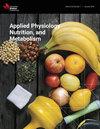Wet Military Uniforms Pose Low Risk of Hypothermia while Static in Mild Cold Air.
IF 2
4区 医学
Q3 NUTRITION & DIETETICS
引用次数: 0
Abstract
Wet clothing is less insulative than dry clothing and increases heat loss in cold air. Tactical necessity can render removal of wet clothing impossible and/or require Warfighters to remain static to avoid detection, limiting heat production and posing a threat of hypothermia (core temperature <35°C). This study aimed to characterize body temperatures and evaluate hypothermia risk while statically exposed to 5°C air wearing three wet military uniforms. Further, low-speed loaded walking was evaluated as a strategy to raise end-static temperatures. Twelve adults (11M, 1F) randomly completed three wet-cold trials wearing either the Improved Hot Weather Combat Uniform (IHWCU), Army Combat Uniform (ACU), or ACU with silk-weight base layer (ACU+). Each trial involved 180 minutes of cold air (5.3±0.3°C, 0.8 m·s-1) exposure after a clothed 2-minute head-out immersion (34.0 ± 0.2°C). Volunteers were static for 60 minutes followed by 120 minutes of loaded walking. Rectal temperature (Tre) area under the curve did not differ among the three wet uniforms when static (p=0.431) with Tre increasing, rather than decreasing, across the 60 minutes (IHWCU: +0.26±0.19°C, ACU: +0.37±0.21°C, ACU+: +0.36±0.20°C). Hypothermia risk with 60-minute static wet-cold exposure therefore appears minimal, regardless of the military uniform worn. End-static finger temperatures (IHWCU: 9.48±2.30°C, ACU: 9.99±1.82°C, ACU+: 9.27±1.66°C, p >0.999) were reduced by ~20-23°C posing a considerable dexterity concern. Heat production of ~210 W·m2 appeared sufficient to begin to reverse negative cumulative heat storage and initiate slight elevation of rectal and peripheral temperatures, although finger temperatures increased < 2°C after 120 minutes. ClinicalTrials.gov ID:NCT05409937.在轻度冷空气中静止时,湿透的军服造成低体温症的风险很低。
湿衣服的隔热性能比干衣服差,会增加在冷空气中的热量损失。出于战术需要,湿衣服不可能脱掉,而且/或者要求作战人员保持静止不动以避免被发现,从而限制了热量的产生并造成体温过低的威胁(核心温度为 0.999)。约 210 W-m2 的热量产生似乎足以开始逆转负累积热量储存,并使直肠和外周温度开始轻微升高,尽管 120 分钟后手指温度升高< 2°C。ClinicalTrials.gov ID:NCT05409937。
本文章由计算机程序翻译,如有差异,请以英文原文为准。
求助全文
约1分钟内获得全文
求助全文
来源期刊
CiteScore
6.50
自引率
2.90%
发文量
113
审稿时长
4-8 weeks
期刊介绍:
Applied Physiology, Nutrition, and Metabolism publishes original research articles, reviews, and commentaries, focussing on the application of physiology, nutrition, and metabolism to the study of human health, physical activity, and fitness. The published research, reviews, and symposia will be of interest to exercise physiologists, physical fitness and exercise rehabilitation specialists, public health and health care professionals, as well as basic and applied physiologists, nutritionists, and biochemists.

 求助内容:
求助内容: 应助结果提醒方式:
应助结果提醒方式:


